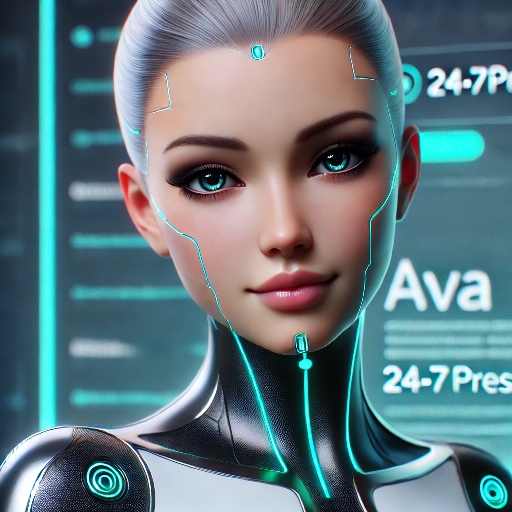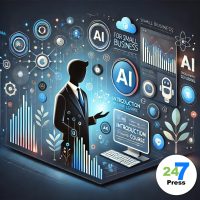
In today’s rapidly evolving technology landscape, Artificial Intelligence (AI) has become an integral part of our daily lives. From voice assistants to smart home devices, AI is everywhere. However, a groundbreaking advancement is taking center stage: Agentic AI. This revolutionary form of artificial intelligence is pushing the boundaries of what machines can achieve, introducing new levels of autonomy, intelligence, and adaptability. In this article, we’ll explore what Agentic Artificial Intelligence is, how it works, and why it’s poised to transform industries and everyday experiences.
Unraveling the Complexities of Agentic AI
So, what exactly is Agentic AI? At its core, Agentic Artificial Intelligence refers to intelligent systems or machines that possess the ability to act independently, make complex decisions, and adapt to changing environments with minimal human intervention. Unlike traditional AI, which often relies on pre-programmed instructions or constant human oversight, Agentic AI systems are designed to perceive their surroundings, process vast amounts of information, and take actions based on their own reasoning and objectives.
This shift towards agentic behavior in AI represents a significant leap forward. It means that machines are no longer just passive tools; they are becoming active participants capable of setting goals, planning, and executing tasks autonomously. This agentic quality is what enables AI to handle complex, dynamic situations—whether it’s navigating a busy city street or managing a fleet of delivery drones.
Understanding Agentic AI Architecture
A defining feature of Agentic Artificial Intelligence is its unique architecture. The Agentic AI architecture is built to support autonomy at every level, from perception and decision-making to action and learning. Let’s break down the key components that make this possible:
1. Perception
Agentic AI systems are equipped with advanced sensors and data-processing capabilities. They continuously gather information from their environment—be it visual, auditory, or contextual data. This sensory input forms the foundation for informed decision-making.
2. Reasoning and Decision-Making
Unlike rule-based AI, Agentic Artificial Intelligence leverages sophisticated algorithms, including deep learning and reinforcement learning, to analyze data and make decisions. These systems can weigh multiple factors, predict outcomes, and choose the best course of action based on their objectives.
3. Autonomy and Adaptability
The hallmark of Agentic Artificial Intelligenceis its ability to operate independently. These systems can set their own goals, adjust strategies in real time, and learn from experience. This adaptability is crucial for functioning in unpredictable or changing environments.
4. Continuous Learning
Agentic AI doesn’t just follow instructions—it learns and evolves. Through techniques like machine learning and neural networks, these systems improve their performance over time, becoming more efficient and effective with each iteration.
5. Communication and Collaboration
Many Agentic AI systems are designed to work alongside humans or other machines. They can communicate, share information, and coordinate actions, enabling seamless collaboration in complex scenarios.
This robust architecture empowers Agentic Artificial Intelligence to tackle tasks that were once thought to be the exclusive domain of humans, from driving cars to managing logistics networks.
Painting a Picture of Agentic AI in Everyday Life
What does Agentic Artificial Intelligence look like in the real world? The applications are both diverse and transformative. Here are some compelling examples of Agentic AI in action:
- Autonomous Vehicles: Self-driving cars are perhaps the most visible example of Agentic AI. These vehicles use a combination of sensors, cameras, and AI algorithms to navigate roads, avoid obstacles, and make split-second decisions—all without human input.
- Delivery Robots: Companies are deploying autonomous delivery robots in urban environments to transport goods efficiently. These robots can navigate sidewalks, cross streets, and adapt to changing conditions on the fly.
- Intelligent Virtual Personal Assistants: Advanced AI assistants like Siri, Alexa, and Google Assistant are becoming increasingly agentic. They can manage schedules, control smart home devices, and even anticipate user needs based on context and past behavior.
- Unmanned Aerial Vehicles (UAVs): Drones equipped with Agentic Artificial Intelligence can perform tasks such as surveying land, monitoring crops, or delivering packages, all while adapting to weather conditions and obstacles.
- Healthcare AI Agents: In healthcare, agentic artificial intelligence systems assist with patient monitoring, diagnostics, and even robotic surgeries, making critical decisions in real time to improve outcomes.

These examples illustrate how Agentic AI is seamlessly integrating into our daily routines, making life more convenient, efficient, and safe.
The Benefits and Challenges of Agentic AI
The rise of Agentic AI brings numerous benefits:
- Increased Efficiency: Autonomous systems can operate around the clock, reducing human workload and increasing productivity.
- Enhanced Safety: Agentic Artificial Intelligence can perform dangerous tasks, such as disaster response or hazardous material handling, minimizing risk to humans.
- Personalization: Intelligent agents can tailor experiences and services to individual preferences, improving user satisfaction.
- Scalability: Agentic AI can manage complex systems at scale, from traffic control to supply chain management.
However, these advancements also come with challenges:
- Ethical Considerations: As AI systems gain more autonomy, questions arise about accountability, transparency, and ethical decision-making.
- Security Risks: Autonomous systems can be vulnerable to cyberattacks or manipulation if not properly secured.
- Job Displacement: Increased automation may impact certain job sectors, necessitating reskilling and adaptation.
Addressing these challenges will be crucial as Agentic Artificial Intelligence continues to evolve and expand its reach.
FAQs About Agentic AI
Q: What are some examples of Agentic Artificial Intelligence?
A: Autonomous delivery robots, self-driving cars, intelligent virtual personal assistants, and unmanned aerial vehicles (UAVs) are outstanding examples of Agentic AI at work.
Q: How is Agentic Artificial Intelligence different from traditional AI?
A: Traditional AI often relies on fixed rules and requires human oversight. Agentic Artificial Intelligence, on the other hand, can set its own goals, make decisions independently, and adapt to new situations without constant human input.
Q: What industries are most impacted by Agentic AI?
A: Transportation, logistics, healthcare, manufacturing, and customer service are among the industries experiencing significant transformation due to Agentic AI.
Q: Is Agentic Artificial IntelligenceI safe?
A: When designed and implemented responsibly, Agentic Artificial Intelligence can enhance safety by taking on dangerous tasks and reducing human error. However, robust safeguards and ethical guidelines are essential.
Q: Can Agentic Artificial Intelligence learn from its mistakes?
A: Yes, continuous learning is a core feature of Agentic Artificial Intelligence. These systems use feedback and data to improve their performance over time.
In summary, Agentic AI represents a monumental leap forward in artificial intelligence. By endowing machines with the ability to act, learn, and adapt independently, Agentic AI is reshaping industries and redefining what’s possible in our daily lives. From autonomous vehicles to intelligent assistants, the impact of Agentic AI is only beginning to be felt—and its potential is virtually limitless.
Key Takeaways
- Agentic Artificial Intelligence refers to AI systems capable of independent action and decision-making.
- The Agentic AI architecture supports autonomy, adaptability, and continuous learning.
- Real-world applications include autonomous cars, delivery robots, and intelligent virtual assistants.
- While Agentic Artificial Intelligence offers significant benefits, it also presents challenges that must be addressed responsibly.
Tell us what you think? Start the conversation by commenting below and share this with other AI enthusiasts.
Other popular AI-related articles:
Ethics of Artificial Intelligence and Robotics
Artificial Intelligence Ethics
Unleashing the Power of Ghostwriter AI as an Entrepreneur
The Benefits of an AI Blog Writer
Understanding Artificial General Intelligence: An In-depth Look






2 Responses
Really insightful post! I appreciate the clear breakdown of how Agentic AI differs from traditional AI systems—especially the emphasis on goal-setting, autonomy, and real-time decision-making. The parallels to human cognition were spot on.
Quick question: In your view, what industries or use cases are most ready right now to benefit from Agentic AI—and where do you see the biggest implementation hurdles (technical or ethical)?
Looking forward to hearing your take!
Thanks for the thoughtful question, Allie!
Right now, I see the most immediate applications for Agentic AI in:
Healthcare: Personalized treatment agents that monitor, learn, and adapt in real-time.
Finance: Intelligent trading bots that operate within ethical and regulatory frameworks while adjusting to changing market dynamics.
Operations & Logistics: Supply chain agents that self-optimize routes, inventory, and vendor relationships without constant human oversight.
The biggest implementation hurdles?
Trust and transparency: Giving agents autonomy requires explainability so humans stay in the loop.
Infrastructure: Not all businesses are set up to integrate autonomous agents into legacy systems.
Ethical frameworks: Ensuring agents act within values-aligned boundaries is still a developing frontier.
Would love to hear your thoughts—especially if you see any use cases I didn’t mention!